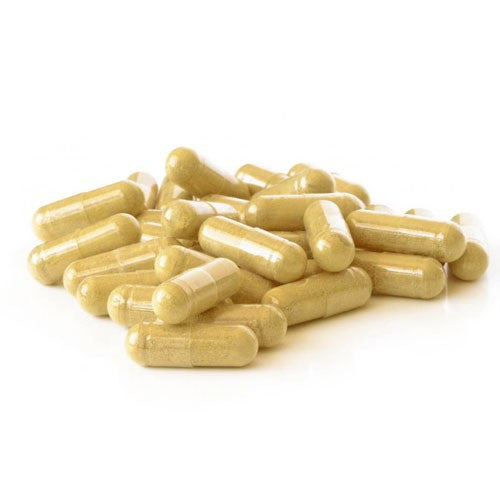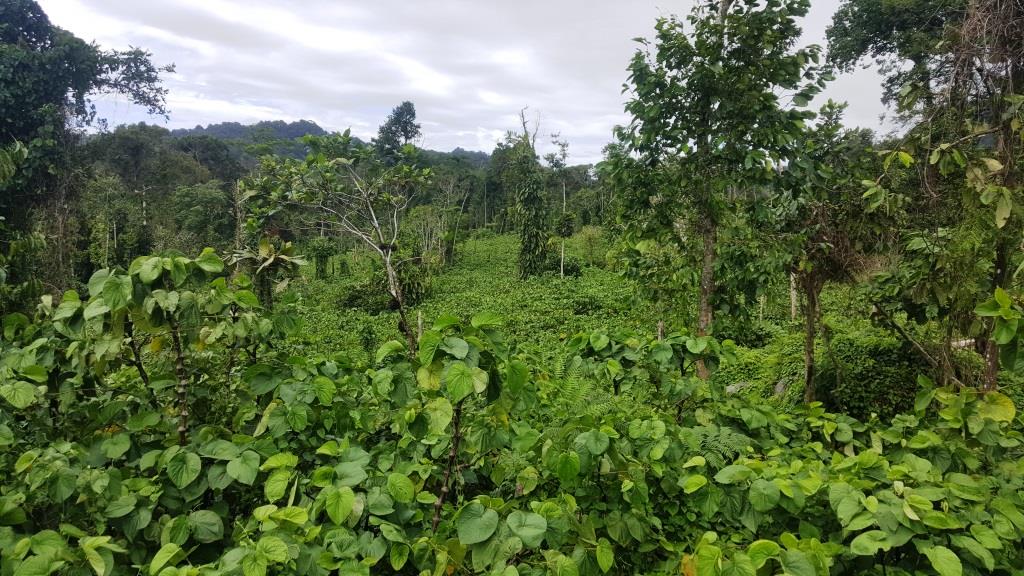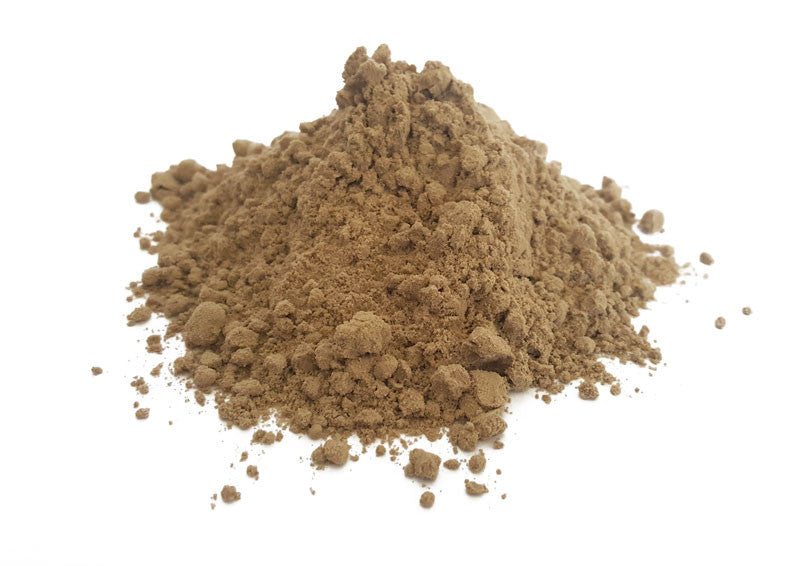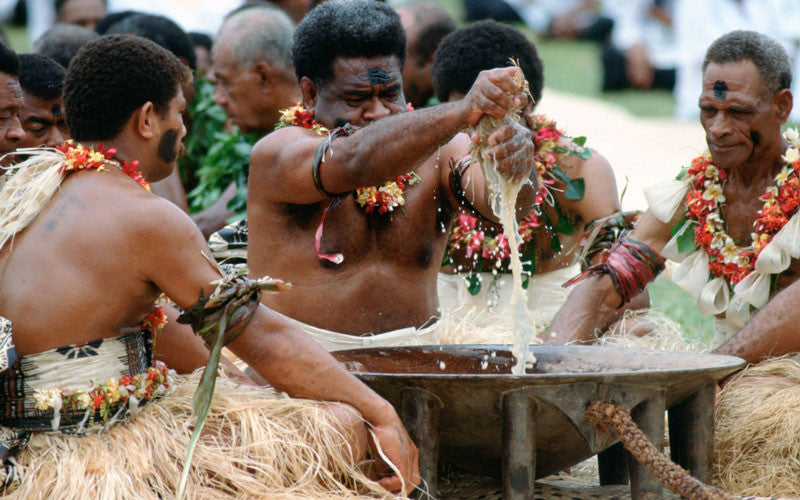Micronized kava seems to be a very ambiguous topic when it comes to kava because there isn’t much information available online about it. A person who is looking to start his or her kava journey usually first attempts to get kava that is relatively easy to prepare with very little steps and is the least expensive. The notion of buying medium grind kava, a strainer, properly dosing, kneading and straining seems overly complicated to someone who's just looking to experiment with kava to see if it really works. Micronized kava and Instant kava are two of the most common grades of kava which comes to mind to offer to the novice with micronized being the least expensive and ideal choice. So what exactly is micronized kava? Even a veteran kava drinker will not be able to answer all the questions about micronized kava. Whats the difference between medium grind and micronized kava? Is micronized kava worth the price? Whats the impact of having the makas removed to produce micronized kava? Should i only get micronized kava from vendors who claim to remove the makas from kava prior to it being dried? Will consuming the makas cause any harm? How can I tell if a micronized kava i purchased contains makas? So many questions come to mind yet very little information is available about this topic. In this post, we attempt to answer as many of the important questions possible to provide you a central location to refer to if you are wondering what micronized kava is all about.
To begin answering this long list of questions we first need to understand what exactly is micronized kava and how did it originate. It is very difficult to pinpoint the exact origin of the coined term of micronized kava because there is no historical record available of how and when improvements have been made to kava processing techniques. We assume that the term originated in USA through a few pioneer kava vendors who sought to make the process of preparing kava easier for consumers but make it seem different to instant kava.
What is micronized kava?
To put it in simple terms, micronized kava is the equivalent of instant dried kava powder. It is kava powder which is so fine in particle size that you only need to mix it to your beverage of choice and its ready to drink. It does not require any process of kneading/ blending and straining like how it would for traditional/ medium grind kava powder.
What makes micronized kava different from traditional/ medium grind kava?
Analyzing the composition of the powders
To answer this we first need to understand what makes up medium grind kava. We know that medium grind kava contains 3 components which are visible to the naked eye apart from the active ingredient known as kavalactones.

- Makas (hard fibers usually lighter colored than the powder but in exceptionally light colored kava powders it can appear darker),
- Root flesh (soft plant material usually powdered)
- Root skin (dark/blackish particles which become more evident after preparation when looking at the strained leftovers).
All three of these components contain kavalactones but the concentration differs in each component. It had been researched in the past that the skin of the kava plant contains the highest amount of kavalactones by weight. This would mean the skin of the roots have the highest kavalactones which is followed by the flesh and then the makas which contains the least (Based on our own findings).
Micronized kava also contains 3 components similar to medium grind kava but the particle sizes are at micron levels (very small) which means it can be consumed directly without straining.
Why is micronized kava more expensive than medium grind kava if it consists of the same components?
Micronized kava can further be categorized depending on an additional step being taken before it is processed. Kava vendors normally retail one particular type of micronized kava dependent on their processing technique.
There are 2 categories. Simple micronized kava and makas reduced micronized kava (often referred to as makas free micronized kava).
- Simple or often considered as the lowest grade of micronized kava is usually made by taking dried kava roots and processing it until it is so fine in size that it can be easily mixed into water and consumed. This grade is usually the cheapest in price and sometimes very close to the price of traditional/medium grind kava. This micronized grade produces a beverage like below
 If you zoom in onto the picture you will notice debris floating at the top of the beverage. Those are some of the makas component of the kava root. Makas is the hardest part of the kava plant and generally cannot be micronized under impact milling machinery. A commercial ball mill which works on the principles of friction is needed to reduce the particle size of the makas to an acceptable size for consuming. But the problem with using any friction principled mill is that it tends to heat and deteriorate the material being micronized which in the case is not ideal for kava as the active ingredients (kavalactones) start to reduce at the temperature of 60 degrees Celsius and higher.
If you zoom in onto the picture you will notice debris floating at the top of the beverage. Those are some of the makas component of the kava root. Makas is the hardest part of the kava plant and generally cannot be micronized under impact milling machinery. A commercial ball mill which works on the principles of friction is needed to reduce the particle size of the makas to an acceptable size for consuming. But the problem with using any friction principled mill is that it tends to heat and deteriorate the material being micronized which in the case is not ideal for kava as the active ingredients (kavalactones) start to reduce at the temperature of 60 degrees Celsius and higher.
- Makas reduced (makas free) micronized kava is considered as a higher grade of micronized kava and is usually more expensive to purchase. This is because before being processed to micronized kava, steps are taken to eliminate or reduce the amount of makas present in the kava. This results in a micronized kava which is slightly more potent than what its medium grind version would have been. It works on the principles of concentration by mass. For example,
You have 100g of kava which has 11% kavalactones. This means 11 grams of kavalactones per 100g of kava. We know that makas has the least amount of kavalactones so let’s assume that there is 15g of makas in that same 100g of kava you have which contains 4% kavalactones. This amounts to 0.6 grams kavalactones per 15g makas. You removed the makas from the kava (100g – 15g) and replaced it with 15g of makas reduced kava which has 10.6% kavalactones. This amounts to 1.59grams kavalactones to 15g makas reduced kava. You now have a total of 100g of makas reduced kava with you. The kavalactone content of that 100g was reduced by 0.6 grams and replaced with 1.59 grams (11 - 0.4 +1.59) of kavalactones. This means you now are left with 12.19 grams of kavalactones per kg which means that the potency of kava has increased from 11% to 12.19% after reducing the makas in the kava. This is an increase of 10.81% in potency from medium grind kava or what would have been simple micronized kava to makas reduced micronized kava.
There are currently only a handful of vendors who take this additional step before micronizing to refine their product and there are various techniques to remove the makas of the kava . The benefits of taking this additional step are:
- It improves the potency of the kava even if it’s only a slight improvement.
- There’s less likelihood of the consumer to experience stomach discomfort with micronized kava
- Less likelihood of experiencing nausea if stayed within dosage limits
Before we begin with talking about how the makas is removed, let’s quickly do a fact check about makas.
- Kava makas contains less kavalactones.
- Makas is a very light weight substance. Its structure has tiny holes in it and is not as dense as the flesh of the kava which carries more lactones. It looks like really thin Linguine pasta. At best its weight relative to 100g of kava maybe just 10 - 15g but max 15%. Below is a picture of the cross section of kava roots. The star like shape is the makas in the kava which runs parallel with the root and increases or decreases in width according to the thickness of the individual root at the point of its length

- As earlier mentioned, It is possible to micronize makas but extremely difficult. The only equipment available to do so is based on the principles of friction which isn’t ideal for processing kava as too much heat is generated from it. You can use a kandap machine which will pin the makas against two metal plates and exert a lot of force, but that method is not efficient in micronizing all the makas.
- Makas gets tougher with the age of the kava plant. If you took dried thick root of a matured plant with same thickness as that of a young plant for comparison, you will require more force to snap the older kava plant root than you would for the younger kava plant root.
How can the makas be removed?
There are two methods through which the makas can be removed and it centres down to the stage at which the makas is being removed. You can remove the makas from the kava when it is still green and you can remove the makas from the kava when it has been dried. Both of the methods have their distinct advantages and disadvantages which we will try to list down for better clarity.
Removing makas when the kava roots is green (freshly harvested)
This is the ideal stage to remove the most amount or possibly 100% of makas for a processor compared to when it has dried. At this stage, the roots are soft and malleable while the makas is tough but also malleable. A unique technique needs to be applied to remove the soft flesh of the kava root and discard the hard fibers (makas).
Advantages
- Highly efficient method of removing the makas (possibility of 100% of makas to be removed)
- High yield of makas free kava if the makas is removed carefully with minimal wastage
- Can be further processed to produce micronized powder which is very close to traditionally prepared kava.
Disadvantages
- Very labour intensive process. This increases processing costs.
- Difficult to scale process to commercial level. There is no machinery available which can simplify or aid in the process of removing makas of different sized roots. It needs to be done manually. If a machine is used to smash the roots into pulp to remove the makas there is possibility of kava juice being lost in the process which decreases potency and increases wastage.
- Not commercially viable as the procedure will be too expensive to recover costs against competitor micronized prices.
To give an idea about how difficult a procedure this is, below is a picture of freshly harvested kava being cut into manageable pieces before being washed. That is equivalent to 4kg of dried kava. Removing makas when the kava is green would require the processor to go through each root individually. It’s more practical to produce instant kava derived from green kava if this level of commitment is required rather than micronized kava since micronized kava is sold for a cheaper price than instant kava and will incur more expenses in producing. Removing Makas when the kava has dried
Removing Makas when the kava has dried
This is not the ideal stage to be removing makas for the processor because the root becomes stiff and hard when dried making the process of separation harder. A unique technique needs to be applied which will basically separate the soft flesh (which easily turns into powder) and the makas (which is difficult to turn into fine powder) at this stage for removal to work.
Advantages
- Process can be mechanized. Commercial grade equipment are available assist with the process of separation
- Less labour intensive. This means more economical in terms of cost.
- Commercially viable procedure
- Produces similar results (NOT SAME) to removing makas when the kava is green.
Disadvantages
- Impossible to remove 100% of the makas. This method is inefficient as during the separation process, some makas is bound to reach micron level and become impossible to separate.
- Impossible to further refine the micronized kava in terms of particle size. It’s difficult to further reduce particle size after separation. Only friction based mills can further process but it isn’t ideal because of the heat generated in milling. Equipment is available but requires extreme levels of investment which isn’t practical unless scale of operations has a very high output.
- Lower yield of makas reduced kava. A lot of wastage occurs because separation is done using particle size differences so there maybe high kavalactone particles stuck onto the makas which also gets separated from the fine powder.
- Feels gritty in texture when the kava is made into a beverage. This is mostly due to the kava flesh particles being relatively larger in size and swelling up as it is rehydrated into any liquid.
As you can tell by now, a lot of value addition is done in terms of processing the kava and further refining it to micronized level. This is the reason why you will find some micronized kava to be more expensive than buying traditional/medium grind kava or low grade micronized kavas. The meticulous procedure of producing a top of the shelf micronized kava is expensive and not as simple as it may seem.
Who has the better quality micronized kava? A vendor who removes makas while it is green or when it has been dried?
There are often claims made by vendors that removing makas when the kava is green may produce a better quality micronized kava because of the possibility of removing 100% of the makas. Too often you will hear people recommending this version of micronized kava over the other.
To begin answering this question we first need to understand the mechanics behind preparation of medium grind kava. As the sole purpose of micronized kava being produced is to provide an instant version to dried kava powder (traditional/medium grind kava)
Medium Grind Kava Preparation Mechanics.
There are two common ways to prepare medium grind kava.
1) Traditional Preparation - When you prepare kava using traditional method, you are kneading and straining the medium grind powder. The particles which are finer than your strainer micron rating emulsifies into the liquid easily while you knead and strain the large micron particles in an attempt to wash out the kavalactones and have it emulsified into the liquid as well. Since force is using during the kneading process you typically push through kava particles a few microns larger than the strainer you use because the kava particles gets soft and begin rehydrating when in contact with liquid.
2) Using the Aluball - When using the Aluball, you are using the pressure generated in the water through shaking to sift out the medium grind kava. Only particles which are finer than the micron rating on the aluball get emulsified into the liquid used and to some extent you maybe extracting kavalactones from the bigger particles but not as efficiently as the traditional method because there is no significant pressure exerted on the kava particles. Remember that the only way to efficiently extract kavalactones from kava is by using an alcohol based solvent (which is declared to being harmful) or CO2 in an high pressure environment (which has not been declared as safe). Mere pressure exerted on kava using hand powered water pressure will not extract much of anything.
In both cases, it is important to note that you are attempting to extract the kavalactones by using pressure applied to the medium grind kava hoping to 'wash' it into the liquid you use. The efficiency of this is dependent on the right technique being used to extract the kavalactones by pressure but majority of the emulsion in the beverage you obtain from medium grind kava comes from very fine kava particles (makas, flesh and skin) which slide past the strainer. This is why if you leave the kava for a long period, the particles settle to the bottom and has an appearance which can be best described as looking like "MUD". Most people don't have digestion problems with this "mud" in their kava because it’s very fine depending on how fine of a strainer was used and can be easily tolerated by your stomach.
This means that even when preparing and consuming traditional/ medium grind kava, you are in fact consuming all 3 components of the kava powder (makas, flesh and skin) which were finer than your strainer bag. Therefore, there is no significant difference to whether 100% of the makas was removed from the kava when it was green or 97% of makas had been removed when the kava was dried. The difference does not warrant any added advantage to either methods because ultimately you consume makas when preparing traditional/medium grind kava anyway. Neither of the two methods will give you stomach discomfort or nausea as supposed to the makas being left in simple/low grade micronized kava.
How do I judge the quality of micronized kava?
This is where most people get it wrong. Quality is not based on the makas in micronized kava been removed 100% when the kava was green or 97% when the kava was dried. The difference is insignificant as both will yield similar results with increased potency and not cause stomach discomfort or nausea.
Micronized kava has been produced in the past and to date to serve as an instant version to traditional/ medium grind kava. It is there to provide convenience to consumers who find the task of traditional preparation of kava daunting, tedious or time consuming. To judge the quality of micronized kava you need to assess it against what is has been designed for, that is, you need to see how close the beverage prepared from micronized kava comes to beverage prepared from prepared medium grind kava by traditional method. Below are the specific factors you need to look for:
-
Floating Makas - As a baseline to quality, the first thing you look for is floating makas in your beverage. As shown in the picture under “Why is micronized kava more expensive than medium grind kava if consists of the same components?” subheading, it will be quite easy to spot the makas in your beverage. That is essentially the lowest grade of micronized kava assuming its noble kava
-
The texture of the micronized kava beverage. You will very often find micronized powder looking very fine in dry form but once mixed into liquid it will look gritty and feel rough to your throat when drinking. You will experience more gag reflex to this type of micronized kava. The question you need to ask yourself is how close does the texture of the kava resemble to that of traditionally prepared kava? Of course it physically impossible to replicate the exact beverage you get from traditionally prepared kava in terms of texture. This is because achieving that level of micronization of particles will require you to use friction principled mills which will deteriorate the quality of the kava with heat. Essentially, the highest quality micronized kava will be the closest to texture of the kava you get from traditionally prepared medium grind kava. It would be bitter but won’t induce your gag reflex (feel like choking) unless if you have an overly sensitive reflex. To test this part you need to drink the micronized beverage like any other drink and not gulp it down.
-
The colour of the beverage through a clear glass. If you inspect the micronized kava beverage in a clear glass, you may see black particles floating inside the liquid which would be very obvious and if left for a while it will easily settle to the bottom. A good quality micronized kava will have these particles so small that it wouldn’t seem obvious to the naked eye unless if very closely inspected. These black particles are the skin of the kava roots.
It is important to note that correct assessment of these factors is dependent on the ratio of micronized powder to liquid used in comparison. It is imperative that the same ratio of powder to liquid be used to test the above factors in micronized kavas in order for a proper comparison to be made. Do not go according to the serving size recommended by individual vendors. As a general rule, 5 grams of micronized powder should be tested in 240ml of water. If you do not have a gram scale then use a level filled measuring spoon for consistency.
Is micronized kava worth buying?
The answer to this question is yes but only if you are getting a top of the shelf micronized kava. Why?
- A lot of time, effort, energy, love and care has been put in by vendors who produce micronized kava for their customers. This is more the case for vendors who produce top of the shelf micronized kava. You are buying a very refined and carefully produced product which is highly valuable
- As explained earlier under the “Medium Grind Kava Preparation Mechanics” subheading, you are essentially consuming very fine root matter with both techniques of preparation more than you are extracting kavalactones. Water extraction of kavalactones is safe but quite inefficient. When comparing the amount of "MUD" you get in both forms of kava, you get more of the finer root powder for consumption with micronized kava by weight than what you get from traditional/medium grind kava. Your preparation technique may not be as efficient when attempting to extract maximum kavalactones, but your stomach will definitely be. Ultimately, the more kava plant matter you consume, the higher amount of kavalactones will be extracted by your stomach and absorbed into your body. This is the reason why many people find micronized kava to feel stronger than medium grind kava and why they feel micronized kava lasts longer than traditional/medium grind kava. NOTE: This does not mean that you should begin fully consuming medium grind kava. The large particles of makas will cause extreme stomach discomfort and possibly land you in a hospital.
- It saves you time and energy. Something a lot of folks need after they start earning money. Like anything convenience comes with a price.
- It is more affordable than instant kava. Instant kava has vastly improved texture than micronized kava and in some cases can seem more potent depending on the dehydration temperature used during processing.
Thank you for taking out time to read through our post. We have tried to be as factual as possible and hope that this post has brought a lot of clarity on the topic of micronized kava for you. If you have any further questions feel free to comment below.
















 If you zoom in onto the picture you will notice debris floating at the top of the beverage. Those are some of the makas component of the kava root. Makas is the hardest part of the kava plant and generally cannot be micronized under impact milling machinery. A commercial ball mill which works on the principles of friction is needed to reduce the particle size of the makas to an acceptable size for consuming. But the problem with using any friction principled mill is that it tends to heat and deteriorate the material being micronized which in the case is not ideal for kava as the active ingredients (kavalactones) start to reduce at the temperature of 60 degrees Celsius and higher.
If you zoom in onto the picture you will notice debris floating at the top of the beverage. Those are some of the makas component of the kava root. Makas is the hardest part of the kava plant and generally cannot be micronized under impact milling machinery. A commercial ball mill which works on the principles of friction is needed to reduce the particle size of the makas to an acceptable size for consuming. But the problem with using any friction principled mill is that it tends to heat and deteriorate the material being micronized which in the case is not ideal for kava as the active ingredients (kavalactones) start to reduce at the temperature of 60 degrees Celsius and higher.
 Removing Makas when the kava has dried
Removing Makas when the kava has dried
Leave a comment: